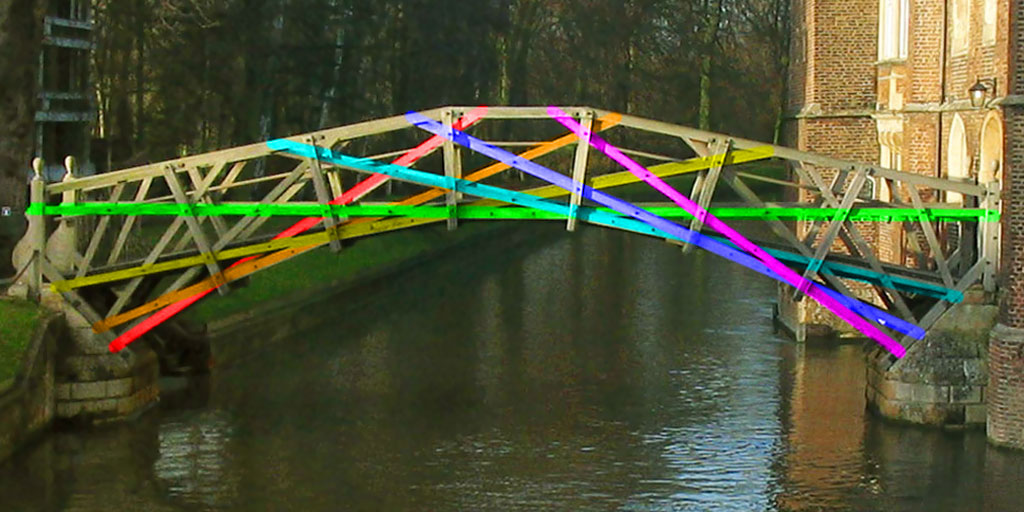Linkage
-
No maths for Europe (\(\mathbb{M}\)). Sadly, the EU parliament has passed up a chance to find a nice (or even not-so-nice) formula for its apportionment of seats to countries, instead opting for back-room deals and numbers pulled out of a hat.
-
Prominent cryptographers Adi Shamir and Ross J. Anderson were both denied visas to travel to the US for a conference and a book awards ceremony respectively (\(\mathbb{M}\), see also). Bruce Schneier mentions “two other prominent cryptographers who are in the same boat”. Odd and troubling.
-
Three new blog posts by Brent Yorgey concern the Euler totient function (\(\mathbb{M}\)). Computing it quickly would break RSA; Brent describes using factoring to do better than brute force. The problem is clearly in \(\#\mathsf{P}\), and I think it may be a natural candidate for being \(\#\mathsf{P}\)-intermediate. Igor Pak (who asked me for \(\#\mathsf{P}\)-intermediate problems when I recently visited UCLA) thinks the prime-counting function may be another, but neither function is very combinatorial. In a recent blog post I found a couple of combinatorial candidates, but others would be interesting.
-
The image below (as redrawn by Brammers) is the Grünbaum–Rigby configuration (\(\mathbb{M}\)) with 21 points and lines, 4 points per line, and 4 lines per point. Klein studied it in the complex projective plane in 1879, but it wasn’t known to have this nice real heptagonal realization until Grünbaum and Rigby (1990). The new Wikipedia article on it was started by “Tomo” (whose real-world identity Wikipedia’s arcane outing rules bar me from disclosing, but he just turned 70, so if you figure it out wish him a happy birthday).
-
Garden of Eden (\(\mathbb{M}\)). Now a Good Article on Wikipedia.
-
Ono et al prove that almost all Jensen-Pólya polynomials have only real roots (\(\mathbb{M}\), via). The Riemann Hypothesis is equivalent to the statement that they all do. The same thing works for similar families of polynomials associated with partition functions and proves a conjecture of Chen. See also a popularized account and Ono’s talk slides.
-
The International Mathematical Union is renaming its Nevanlinna Prize to be the IMU Abacus Medal (\(\mathbb{M}\)). The prize is given every four years for major accomplishments in theoretical computer science. The article doesn’t say why rename but it’s because Nevanlinna was a Nazi sympathizer and collaborator. The prize was named after him in the early 1980s because its funding came from Finland, but Nevanlinna also never had much to do with TCS.
-
Gasarch on proofreading (\(\mathbb{M}\)). Just as in programming, there’s always one more bug.
-
Ellen Fetter and Margaret Hamilton: Uncredited collaborators with Edward Lorenz at the birth of chaos theory (\(\mathbb{M}\)).
-
Elisabetta Matsumoto is studying the mathematics of knitting (\(\mathbb{M}\), via), with the hope that it can lead to new programmable metamaterials.
-
IEEE bans Huawei employees from reviewing submissions to its journals (\(\mathbb{M}\), via), saying it is forced to do so by US government sanctions.
-
The UCI University Club (which in other places might be called a faculty club) is next door to the building I work in, and has a bustling side business hosting weddings. Here’s the view that greeted me as I left the office this evening, looking across their lawn towards the gazebo (\(\mathbb{M}\)).
-
Line arrangements in architecture (\(\mathbb{M}\)): the beams of Cambridge’s Mathematical Bridge form tangent lines to its arch and then extend through and support its trusswork, while another set of radial lines tie the structure together. The bridge just looks like a wood truss bridge in real life but this artificially-colored image makes the underlying structure clearer.

